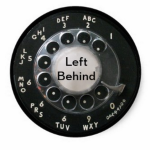
For those who are Deconstructing their faith, the common denominator for many of them is a complete overhaul of how they see and understand the Bible.
To put it another way: Once you realize that God didn’t write the Bible and that we did, you’ve taken your first step outside of the fear-based traditional Christian control machine.
Because more often than not the Bible is used as a bludgeon to keep Christians safely behind the razor wire of religious captivity. Or, I should say, a very specific interpretation of the Bible is useful for keeping people under the thumb of their pastor, church and denomination.
If you accept the notion that the Bible is inerrant [it’s not], then you’re easily manipulated by those who want you to fear a God of vengeance and wrath who could make your life a literal living hell for the slightest infraction, stray thought or moral failure.
If you accept this “Flat Bible” perspective, it’s much easier to threaten you into swallowing those troublesome questions about why some verses seem to contradict one another, or why Jesus seems to portray a very different version of God than what we read about in the Old Testament.
Do you want to burn in hell for eternity? No? Then keep your mouth shut and go back to underlining your Bible while the pastor fills in the blanks for you in his 3 point sermon.
Do you want to lose your salvation? Good! Then stop saying you can’t understand why a loving God would burn His children forever in the lake of fire.
So, what’s the way out of this oppressive feedback loop? For me, it was realizing that there was another – and frankly more historically Christian – way of approaching the Scriptures.
I came across this “Jesus-Centric” method of reading the Bible while researching the Anabaptists movement during the Reformation. In his book, “The Reformers and Their Step-Children”, Leonard Verdun explains that the fundamental tension between the Reformers and the Anabaptists came down to this one thing: The way they each approached the Scriptures. The Reformers took a “Flat Bible” approach which assumes that very scripture is equally authoritative, and the “Jesus-Centric” view which the Anabaptists embraced where everything filtered through the lens of Christ.
This realization literally set me free from the tyranny of Biblicism. I suddenly understood how to read and process the Scriptures more clearly, and that gave me so much peace of heart and mind.
Essentially, this “Jesus-Centric” approach is what we see modelled for us in the Mount of Transfiguration where Peter, James and John see Jesus transfigured on the mount alongside Moses and Elijah. Peter takes the “Flat Bible” approach when he suggests that 3 tabernacles should be constructed for Moses [who represents the Law] and Elijah [who represents the Prophets] and Jesus [the Messiah]. In response to this idea, God removes Moses and Elijah [the Law and the Prophets] and says, “This is my Son. Listen to Him!”
It’s also why Jesus strongly rebukes the Pharisees for searching for life in the Scriptures, telling them that there is no life in those Scriptures, but that if they would come to him they would find life.
And, to be very honest, the Gospel of John is probably one of the most radical documents in the entire New Testament when it comes to elevating Jesus about the Scriptures, especially where he says in the very first chapter that the “Word was with God, the Word was God and the Word became flesh and dwelt among us.” Notice that at no time in that sequence did the Word of God become a book.
Furthermore, in the same chapter, John suggests that “No one has seen God at any time.” Whoa! Not Moses? Not Isaiah? Not Jeremiah? Wow. And then he goes on to say that the only one who has ever seen God is Jesus, and that the reason Jesus came was to reveal the Father to us.
In other words, if all we did was read the Old Testament Scriptures, we would still not have a clear and accurate picture of who God was and what God is like.
This is part of why Jesus came to us: to reveal the Father’s true heart to us.
And, it’s also why Paul so dramatically declares that “To this day whenever the Old Covenant [scripture] is read, a veil covers their eyes” and that “only in Christ is the veil removed!” [See 2 Cor. 3:14-16]
So, to be honest, this “Jesus-Centric” way of reading the Scriptures is loudly and proudly declared from nearly every page of the New Testament. Most of us haven’t noticed it because, as I mentioned earlier, we’ve all been told that the entire Bible is equally authoritative and that none of it can ever contradict anything else. Therefore, Jesus isn’t allowed to correct Moses [even though he does so numerous times in the Gospels], and everything needs to somehow fit together like a perfect jigsaw puzzle, even when it doesn’t.
If you’re curious about how to read the Bible through the Lens of Christ, I’d love to invite you to register for a new class I’m teaching through BeADisciple.com called “Jesus Unbound: Learning to Read Scripture Thru the Lens of Christ” which starts on Monday, Feb. 10. You can learn more and register HERE.
**
Keith Giles was formerly a licensed and ordained minister who walked away from organized church 11 years ago, to start a home fellowship that gave away 100% of the offering to the poor in the community. Today, He and his wife have returned to El Paso, TX after 25 years, as part of their next adventure. They hope to start a new house church very soon.
Want Keith to come speak at your church or in your home town? Send an invitation HERE













